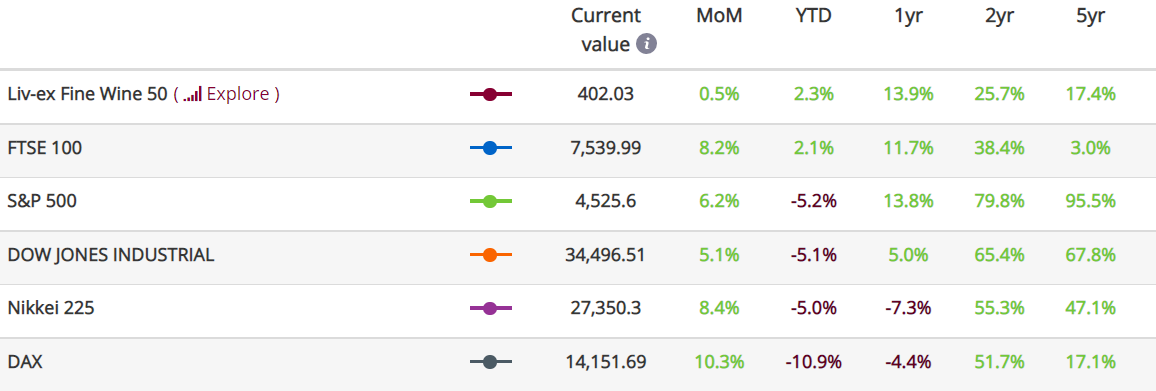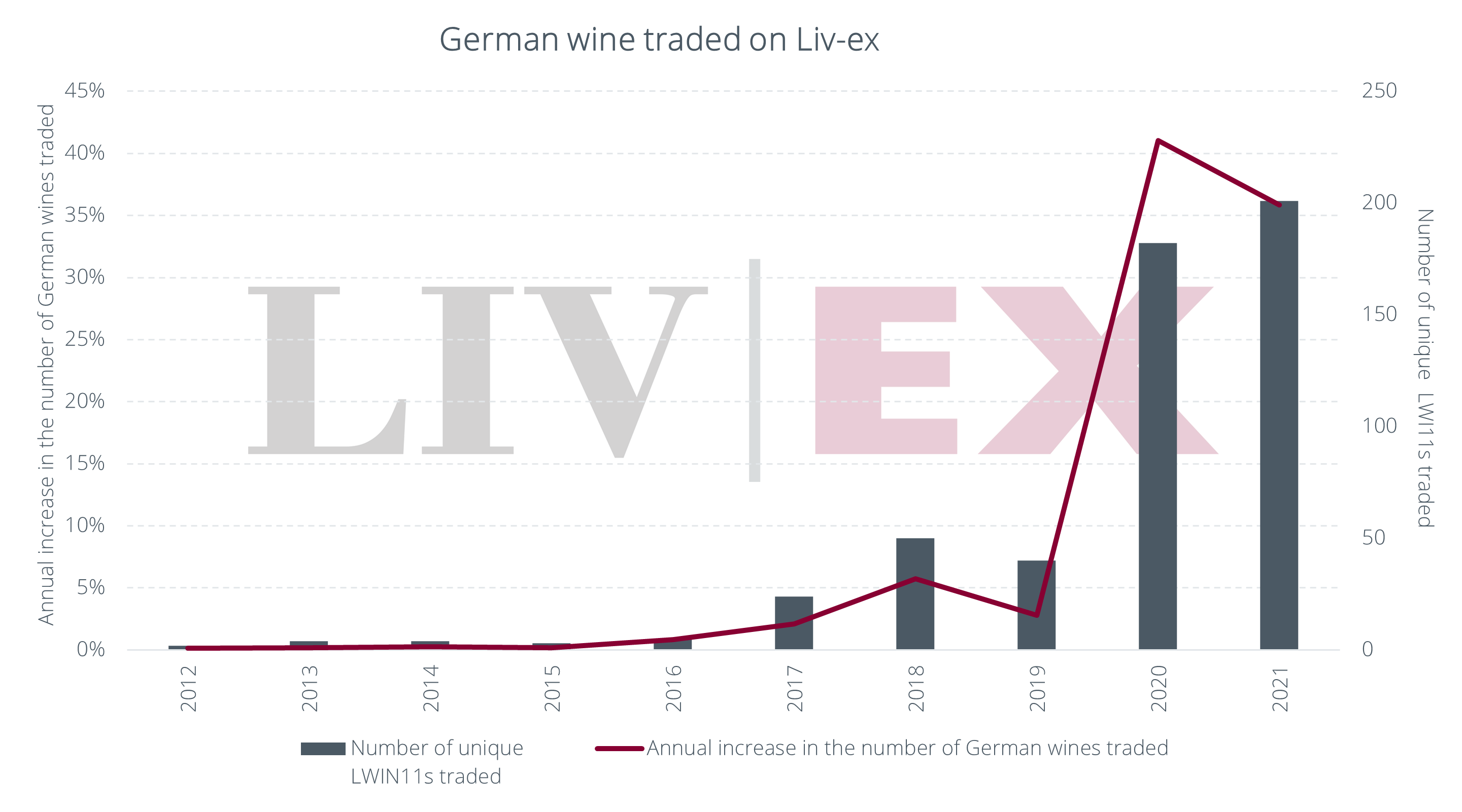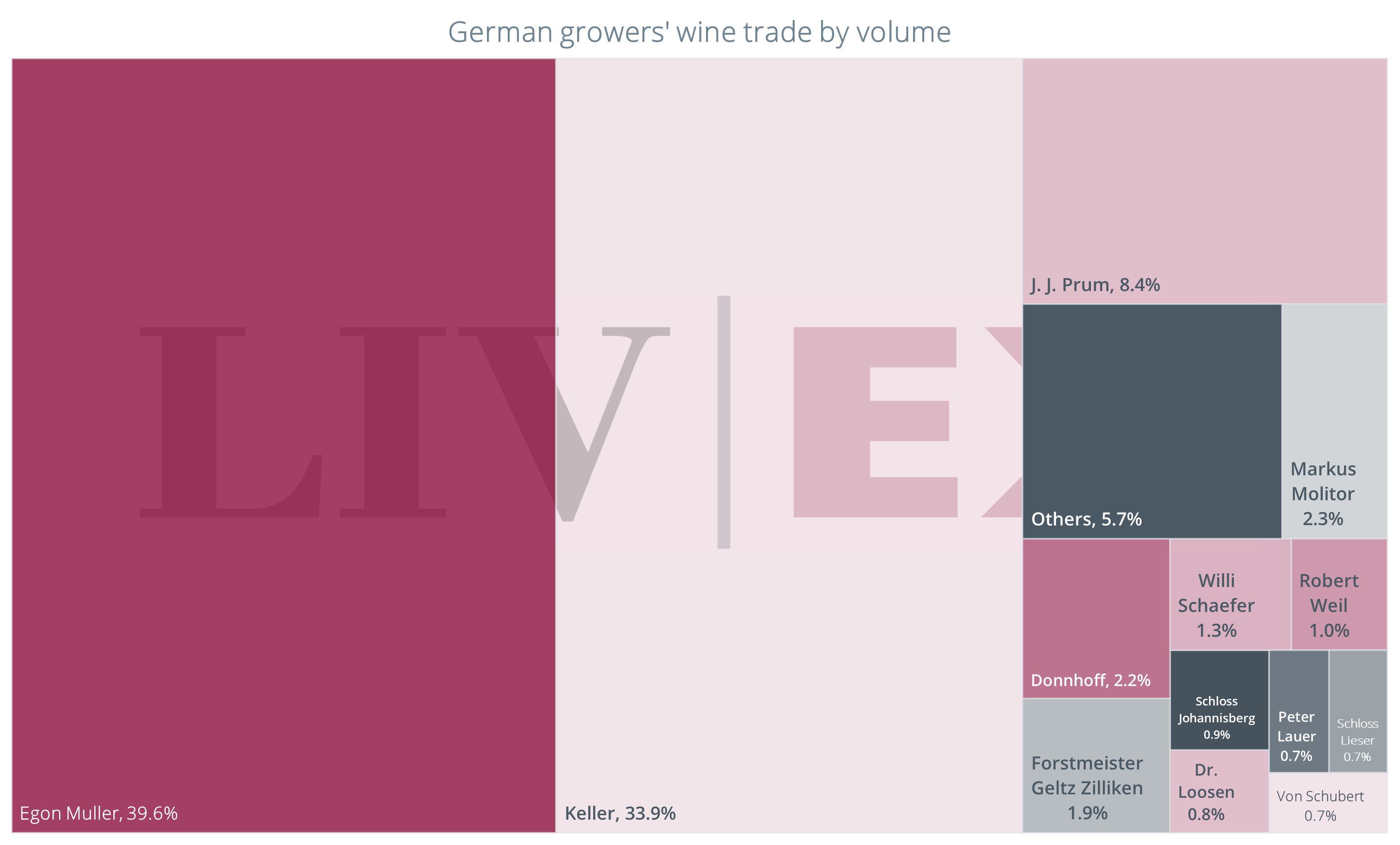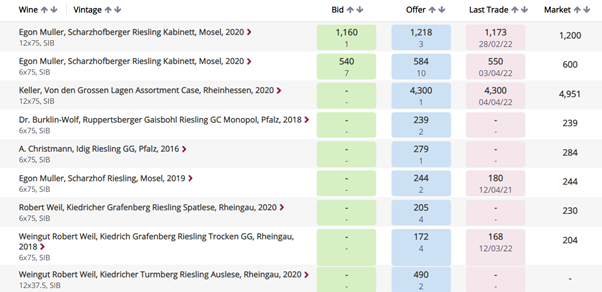
Germany is one the fastest growing markets on Liv-ex. The number of wines attracting secondary market demand has risen five-fold in the last two years.

Due to the heavy representation of white wine, which makes up 98.8% of German trade by value, the country occupies a niche on the secondary market.
Although the market has broadened considerably in recent years, just 9.5% of the wine traded on Liv-ex is white. The overall preference is also for dry white wines – for the most part white Burgundy – yet the late-harvest wines from Germany are nonetheless enjoying demand. In 2021, Spätlese and Auslese styles were the most traded German wines by value.
The leading regions are Mosel (59.9%) and Rheinhessen (32.9%), homes of the famous growers and Germany’s secondary market leaders Egon Müller and Weingut Keller respectively.
Other producers that are increasingly active on Liv-ex are Markus Molitor, Joh. Jos. Prüm, Zilliken, Dönnhoff, Willi Schaefer and Robert Weil – again, reflecting a preference for established names in classic regions as this emerging market develops.

Year-to-date, the number of German wine brands traded (LWIN7) is already half the record level achieved last year. If the pace of broadening keeps up, the market may soon see new names making an appearance.
Currently there are over 340 LIVE German wine opportunities.

Liv-ex analysis is drawn from the world’s most comprehensive database of fine wine prices. The data reflects the real time activity of Liv-ex’s 560+ merchant members from across the globe. Together they represent the largest pool of liquidity in the world – currently £100m of bids and offers across 16,000 wines. Independent data, direct from the market.




